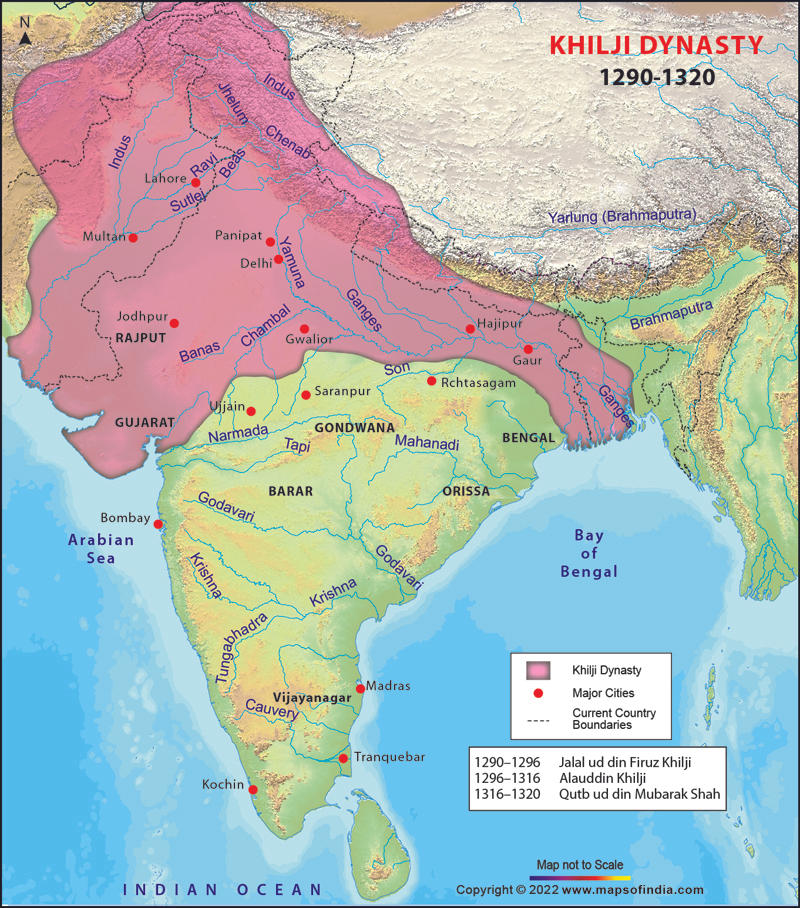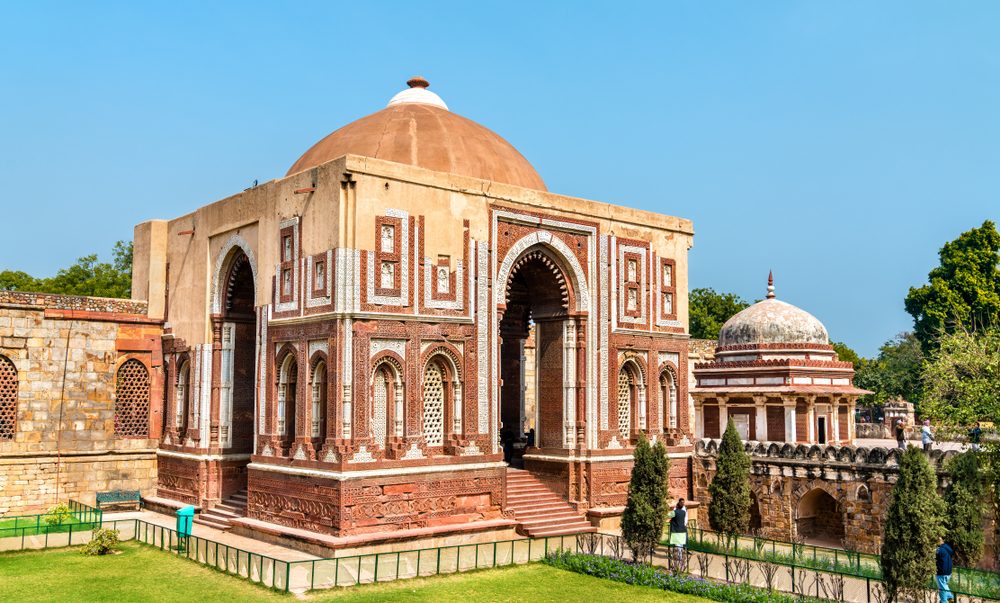Table of contents
Delhi Sultanate
The period between 1206 A.D. and 1526 A.D. in India’s history is known as the Delhi Sultanate period. It has five dynasties as enumerated and explained below.

Slave or Mamluk Dynasty (1206-1290 CE)
- Qutub-ud-din Aibak was the founder of the Slave dynasty, was known as ‘lakh Baksh’ and had capital at Lahore.
- He constructed Quwwat-ul-Islam, Adhai din ka Jhonpra and started construction of the Qutub Minar.
- Next was Iltutmish who shifted capital to Delhi and was the real consolidator of Turkish rule in India.
- He created Turkan-i-chahalgani.
- Next was Razia Sultan, the 1st and only female Muslim ruler of medieval India.
- Balban/Ulugh khan said that Sultan was God’s shadow on earth (Zil-i-Ilahi) and recipient of divine grace (Nibyabat-i-Khudai).
- He broke the power of the Forty i.e Turkan-i-chahalgani, and introduced the Persian festival Nawrouz.



Khalji Dynasty (1290-1320 CE)
- Jalauddin Khalji was the founder who had a benevolent attitude towards Hindus because of the belief that the State should be based on the willing support of the governed.
- He was murdered by son-in-law Alauddin Khalji.
- Alauddin Khalji became Amir-i-Tuzuk (Master of Ceremonies) and Ariz-i-Mumalik (Minister of Law) during Jalauddin Khalji's reign, but he reversed Alauddin’s policy of tolerance.
- He banned intoxicants to avoid social gathering, reorganized spy services (Barids), separated religion from politics and proclaimed “Kingship knows no kinship”.
- Under him, Barani wrote the book ‘Tarikh-i-Firuz Shahi and poets like-Amir Khusrau and Mir Hasan Dehlv were patronized. Amir Khusrau got the title of Tuti-i-Hind
- He constructed Alai Darwaza, Hauz Khas, Alai Minar and a new capital at Siri. he also introduced Chehra and Dagh system, and initiated market reforms.



Tughlaq (1320-1413 CE)
- Ghiyasuddin Tughlaq was the founder and he built a strong fort called Tughlaqabad near Delhi.
- He was the 1st Sultan to start Irrigation works and his rise is documented in Amir Khusrau’s famous work “TughlaqNama”.
- Next was Mohammad Bin Tughlaq under whom the Delhi Sultanate reached its zenith.
- He advanced secular policies and defeated the Mongols
- Ibn-Batuta was his contemporary and his envoy to China.
- He built Adilabad fort and the city of Jahanpanah.
- He set up Diwan-i-amir- kohi to extend cultivation by giving loans (taccavi loans).
- But his blunders include transferring capital from Delhi to Daulatabad, issuing of token currency, Khorasan project to counter the Chinese and the failed Quarachi expedition.
- Firoz Shah Tughlaq adopted an appeasement policy and extended the principle of heredity to the army & nobility.
- The Iqta system was revived and made hereditary.
- To appease theologians, Firoz prohibited Muslim women from worship, gave concessions to theologians and made jizya a separate tax.
- Hospitals called Dar-ul-shifa and royal factories called karkhanas were set up, Diwan -i-Bandagan or department for slaves made and Sharb or irrigation tax was imposed.
- Malik Sarwar, a noble and wazir, asserted independence and assumed the title of Malik-us-Sharq.
- Nasiruddin Muhammad was the last ruler of the Tughlaq dynasty as Taimur invaded India during his reign.

Saiyyad Dynasty (1414-1451 CE)
- It was founded by Khizr Khan, who was appointed as Governor of Multan by Timur before departing from India.
- He died in 1421 and was succeeded by Mubarak Shah and later Muhammad Shah.
- Last ruler Alauddin Alam Shah was the weakest and he handed over the throne to Bahlul Lodi.

Lodhi Dynasty (1451-1526 CE)
- Founded by Bahlul Khan Lodi, it was the last dynasty of the Delhi Sultanate and was of Afghan origin.
- Sikandar Lodi was the next ruler who was a contemporary of Mahmud Begarha and Rana Sanga.
- He founded Agra and transferred the capital from Delhi.
- He established a new yard measurement system called the Gaz-i-Sikandari but being an orthodox and a bigot, he reimposed the Jizya on Hindus.
- Next ruler was his son, Ibrahim Lodi, who was defeated in 1526 at the Battle of Panipat.
- This was the end of the Lodi Dynasty and Delhi sultanate, and the rise of the Mughal Empire.

